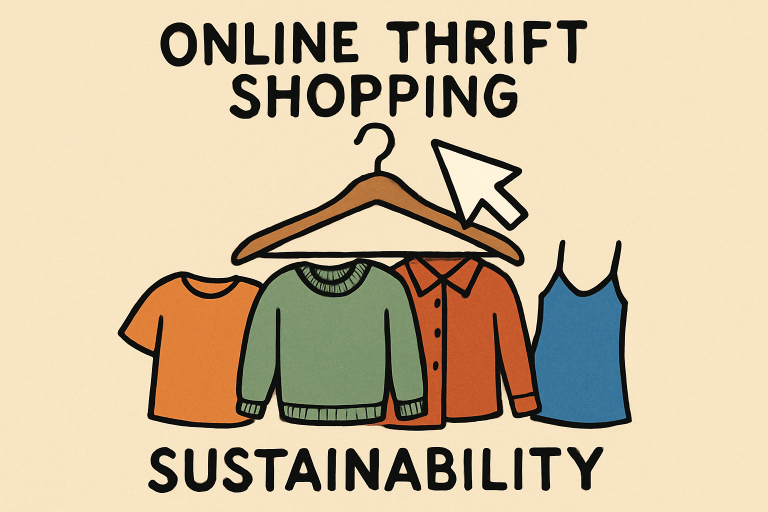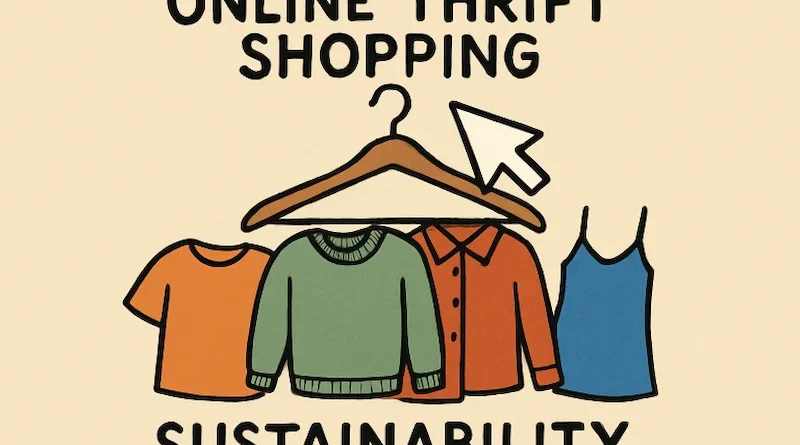Why Thrift Shopping Online Is the Future of Sustainable Fashion
Key Takeaways
- Fast fashion is a leading contributor to global pollution and environmental harm.
- Online thrift shopping offers consumers a sustainable, cost-effective, and expressive alternative.
- Technological advancements and social media are accelerating the popularity of secondhand fashion.
- The resale market is growing, with consumers and brands embracing secondhand solutions.
- Adopting thrift shopping habits is a practical way for individuals to reduce their environmental impact.
The Environmental Impact of Fast Fashion
The global fashion industry, especially fast fashion, is a significant driver of environmental damage. It generates approximately 2–4% of worldwide carbon emissions and is responsible for about 20% of global wastewater production. Massive water usage, chemical runoff, and heavy reliance on synthetic fibers further degrade landscapes and pollute our oceans with microplastics. Each cheap, mass-produced garment adds to an unsustainable cycle of consumption and waste.
As consumers become more eco-conscious, online thrift shopping emerges as an innovative and impactful solution. Shopping at an online thrift store prolongs the useful life of clothing, reducing the demand for new clothing production and limiting textile waste in landfills.
Thrift Shopping as a Sustainable Alternative
Choosing pre-owned clothing is an actionable way to support sustainable fashion. Thrift shopping extends the life cycle of each garment, helping conserve the energy, water, and raw materials otherwise used in creating new items. With secondhand shopping, consumers actively participate in a circular fashion economy, lessening environmental strain while finding one-of-a-kind items that fit their tastes and values.
According to the Ellen MacArthur Foundation, shifting to circular models like thrifting can cut the industry’s greenhouse gas emissions by over 40% by 2030. This not only addresses global ecological concerns, but it also empowers shoppers to make greener choices every day.
Technological Advancements in Online Thrifting
Technology is propelling the thrift revolution forward. Innovative online platforms such as ThredUp and Poshmark now harness artificial intelligence to improve user experience and item discovery. For example, ThredUp’s search tools allow customers to enter highly specific keywords or upload images to find similar clothing. This personalized browsing experience has led to a noticeable rise in user engagement, making secondhand shopping quicker and more accessible than ever.

Economic Benefits for Consumers
The cost savings associated with thrift shopping are substantial. In a world where inflation and supply chain issues drive up apparel prices, consumers increasingly seek alternative ways to build their wardrobes. A 2024 survey found 62% of shoppers would opt for secondhand clothing if new items became less affordable—a trend that is only expected to grow. Thrift shopping enables people to purchase high-quality, stylish garments at a fraction of their original price, stretching their budgets further.
Unique Style and Personal Expression
One of the major draws of online thrift shopping lies in its uniqueness. Unlike fast fashion brands focused on mass production, the secondhand market boasts rare, retro, and vintage finds that let shoppers curate a truly personal wardrobe. The “treasure hunt” mentality of searching for specific pieces or stumbling upon unexpected gems brings joy while helping individuals express their authentic style.
Social Media’s Role in Promoting Thrifting
Social networks like Instagram, TikTok, and Pinterest play a pivotal role in the mainstream adoption of thrift shopping. Influencers and everyday users showcase sustainable fashion hauls, share styling tips, and create viral trends using thrifted pieces. Popular hashtags such as #thriftfinds or #secondhandfirst and engaging video content inspire millions to embrace resale fashion and awareness of its benefits.
Corporate Involvement in the Resale Market
The fashion industry has noticed shifting consumer behavior. Major brands now collaborate with online resale platforms to launch sustainable services. For instance, UK retailer Marks & Spencer partnered with eBay to make it easier for customers to buy and sell preloved clothes, further integrating secondhand options into mainstream shopping experiences.
The Future of Fashion: Embracing Secondhand Shopping
The growing popularity of thrifting is more than a passing trend—it’s a fundamental shift towards ethical and responsible consumerism. With mounting environmental concerns, emerging technologies, and global economic pressures, the future of fashion is rooted in the values of reuse, resourcefulness, and creativity. As platforms like Depop and Vinted continue expanding, the resale market is poised to become a major player in sustainable fashion’s next chapter.
Final Thoughts
Online thrift shopping stands at the intersection of sustainability, affordability, and individuality. By supporting the secondhand market, consumers reduce their carbon footprint, invest in long-lasting style, and pave the way for a greener future. As more people discover the environmental, social, and personal gains from buying preloved fashion, the movement toward conscious consumption is destined to thrive.
Visit the rest of the site for more interesting and useful articles.

